Visiting the COPE Visitor Center in Laos opened my eyes. Like most Americans, for most of my life I had a pure affection for my country. In my eyes, America was the flawless beacon of humanity, moral righteousness, and good will for all other nations. I believed in this ideal because this is what had always been taught to me for much of my life in the public school system. In terms of the United States’ foreign affairs, I believed the nation had a long history of always conducting itself with the utmost morality.
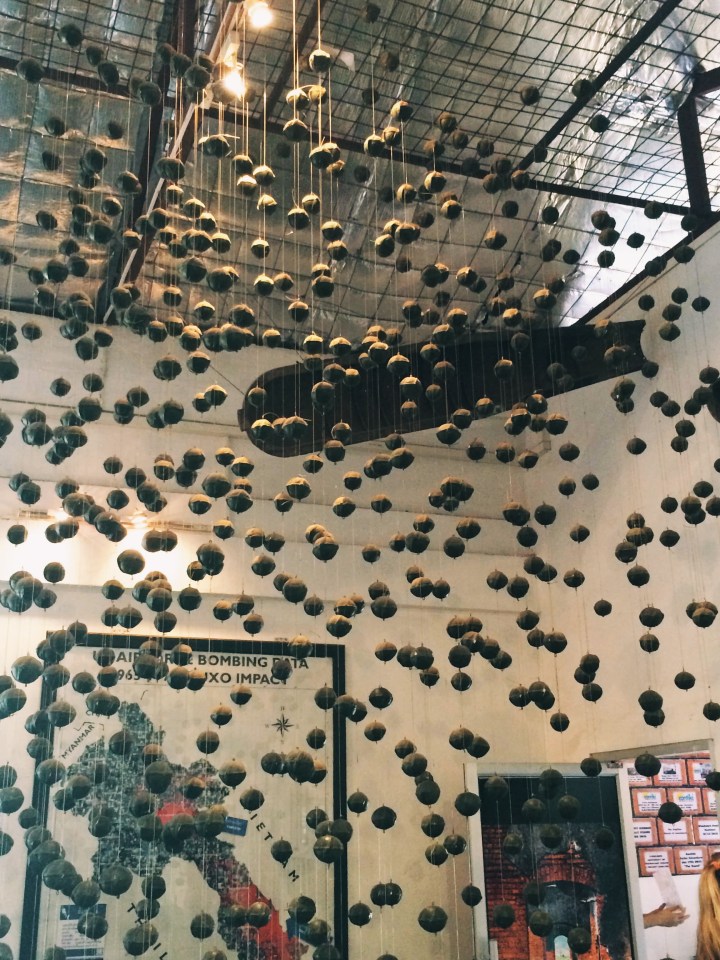
My visit to Laos several years ago was the catalyst for the most profound paradigm shift of my life. Writing this now, I realize how embarrassingly naive that first paragraph sounds. However, I always strive to write the truth. During my visit to Laos, I began to see that while I have so much love and adoration for my home country, it has not always been that shining beacon of morality. I had the honor of visiting the COPE Visitor Center in Laos.
I visited the capital city of Laos – Vientiane and had the opportunity to spend the day at the COPE Visitor Center. There, I learned the profound and heavy impact of the United States’ hidden war against Laos.
-
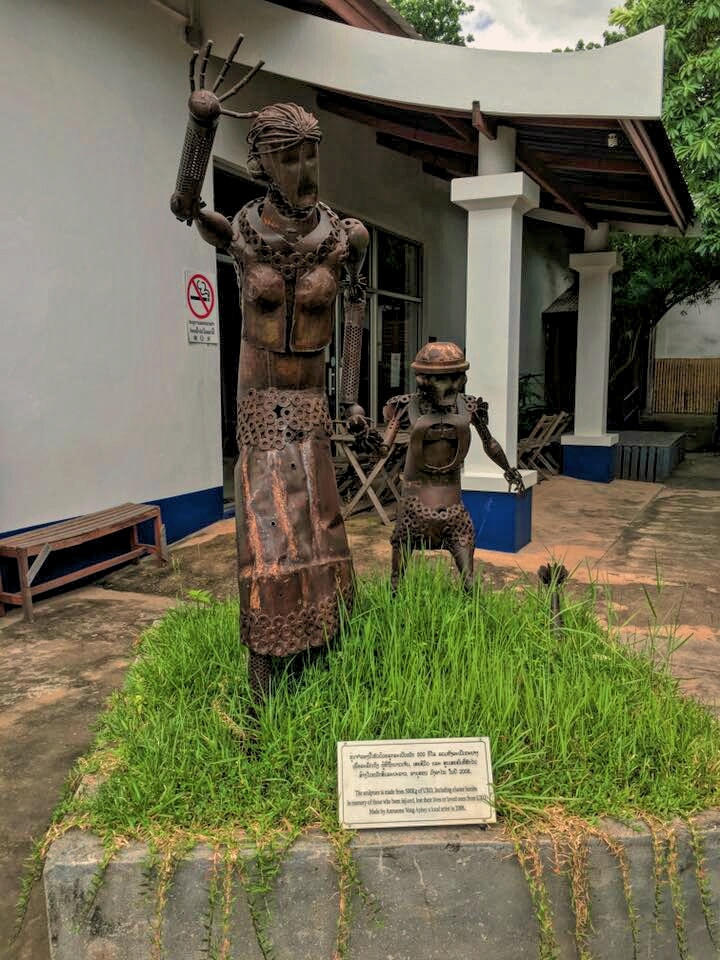
A haunting sculpture made of UXOs from Laos -

All Americans learn about the Vietnam war in high school. However, I’d dare to say most Americans graduate high school and go out into the world knowing nothing about the affected countries around Vietnam. I’m sure if you mentioned Laos to many Americans, they might think you were talking about a bug in your hair.
America’s Secret War with Laos
Before I go over my time visiting the COPE Visitor Center, let me give some quick background. The United States was at war with Vietnam roughly from 1955 to 1975. America believed communism anywhere in the world to be a huge threat. The USA subscribed to the Domino Theory. If one nation falls to communism, so do the others around it, and we would find ourselves with no allies. Vietnam was torn in half. The north of the country was led by Ho Chi Minh and was communist. The south had support from the USA and was a capitalist republic. There are many other factors to this war, but for the purposes of this blog – this information is adequate.
So, where does Laos factor in? From 1964 to 1973, the United States dropped an estimated, “plane load of bombs every eight minutes, 24 hours a day, for nine years on Laos.” There were 580,000 estimated bombing missions in total. It was thought that a Viet Cong spy trail lay partly within the country of Laos. So, this was the result. The Viet Cong were a guerrilla group from the North of the country that had trails into the South. Moving on, the United States was not officially at war with Laos, so this event is often called the “secret war.”
You can imagine who pays the price for war – innocent people. I hope I do not have to paint a picture of what happens when a bomb drops on a country. However, what of the bombs that do not explode? According to the Pulitzer Center, 80 million of the bombs (2 million tons) that were dropped did not detonate upon arrival. Instead, they are pervasive and hidden within Laos. Laos is a largely agrarian society. As such, when Laotians work in the fields for any number of reasons, they often come into contact with one of the unexploded ordinances, better known as UXOs, and either lose their life or lose their limbs. 25% of villages in Laos have unexploded mines. At least 20,000 Laotians have been killed or maimed by UXOs since the end of the war.
Source: Lao government’s National Regulatory Authority & CNN
I learned all of this information while visiting the Cope Center. My visit there has sparked an interest in ongoing research in this area for me, and I have also been following this story in the news. Shortly after my visit to Laos, then-president Barack Obama’s administration announced they would be giving 90 million dollars to help clean up Laos’s UXOs. While this is undoubtedly good news, let’s be clear: Laos won’t be able to get rid of all the UXOs for at least the next 100 years – possibly longer. No matter how much money and time a nation invests, there are 2 million tons of bombs within the country. This gesture will at best make only a dent in the recovery efforts.
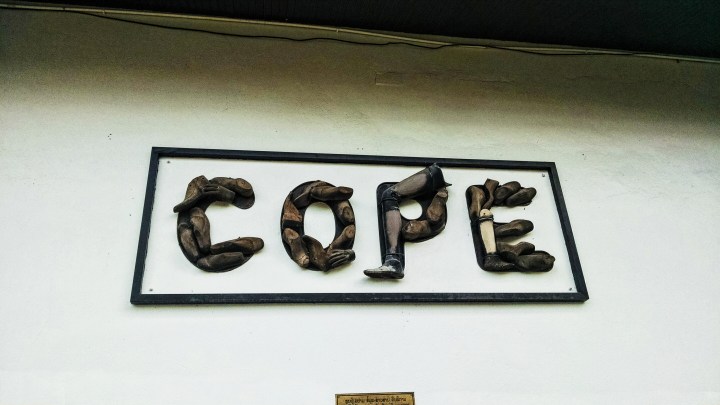
How COPE Helps
The COPE Visitor Center provides orthotic services and prosthetic limbs to those in need, free of charge. Those who receive help through COPE receive surgery and rehabilitation. COPE also works so that these people may receive surgery, transportation, accommodation and food during their treatment and rehabilitation. This is possible through donations. While all Laotians, regardless of how they came about their injury, may benefit from COPE’s services, the majority of those helped are those who have fallen victim to UXOs.
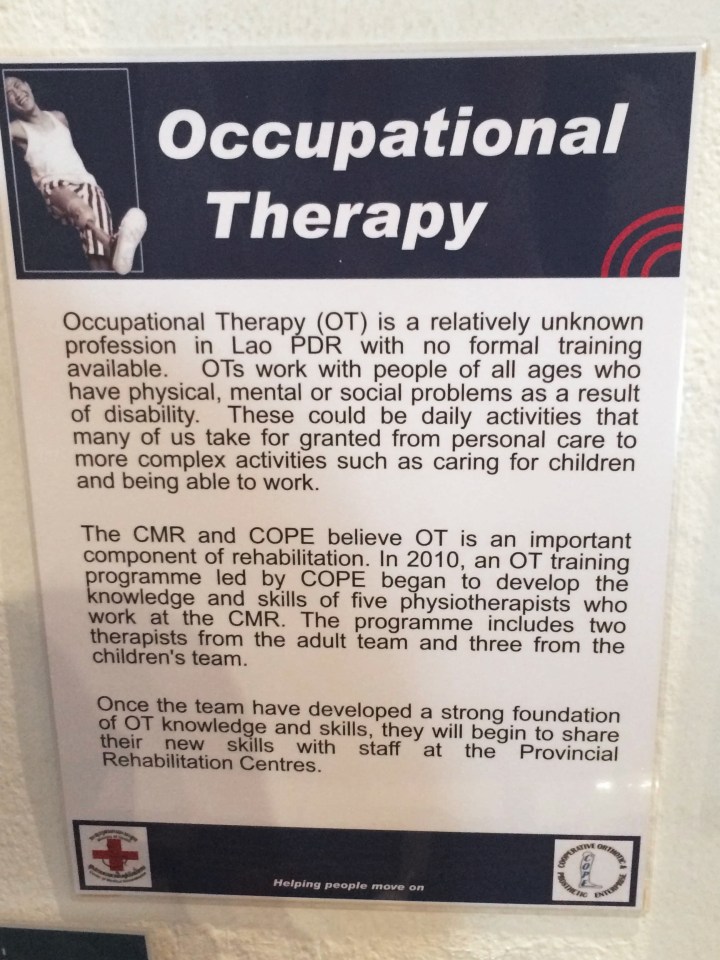
The COPE Visitor Center is small, and offers a sobering experience. It is definitely a must to plan on visiting the COPE Center in Laos. There is a film which plays on a loop to inform visitors of all of the history I have outlined above. Maps and diagrams are also on display to aid in better understanding the history.
There are chilling exhibits which introduce visitors to “cluster bombs” and their impact.
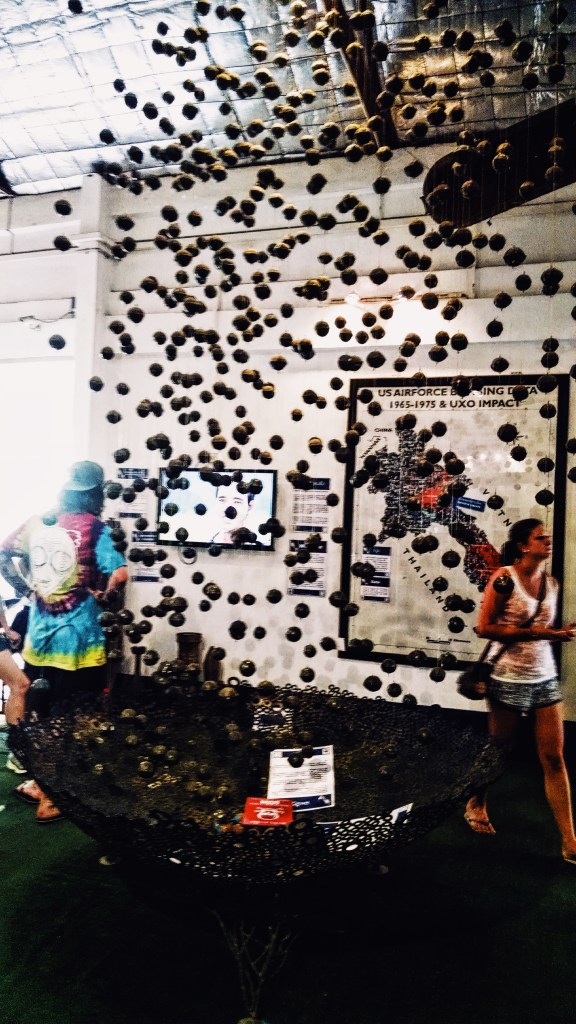
Visitors can also see displays of the types of prosthetics COPE provides for its beneficiaries. Just as well, you can see orthopedic tools which help those whose limbs are damaged from the effects of UXOs. There are some stories of real people and the impact that both UXOs and COPE have had on their lives.
-

Processed with VSCO with j5 preset
As of 2019 entry is still free, but of course you should donate to the center. The cause is so very worthy. There is also a small shop on sight, as well as a cafe that serves great ice cream.
Visiting the center allowed me to learn about this very important piece of not only Laos’ history, but the history of my own country. In the beginning of our excursion, our tour guide began talking about the dropping of the bombs. I do not remember if I asked this aloud, or only to my husband. However, I definitely remember asking, “who would do such a thing?” When I found out that the answer was my own country, I felt a wave of emotions. Even though I personally had nothing to do with this event, I felt ashamed and embarrassed.
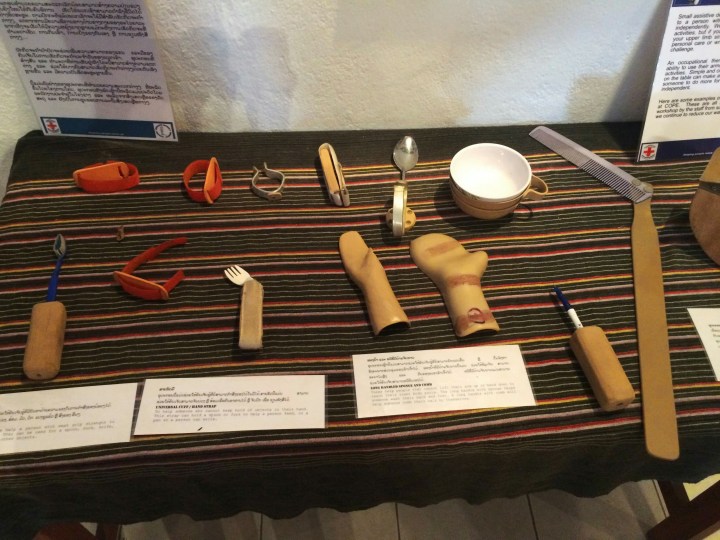
I know that NONE of my tour group friends thought ill of us. But some of them seemed to make a face as if to say, “typical.” Somehow, some of them seemed to already know how imperfect my country had been throughout the course of history. I was angry. Anger overcame me because I felt that I had been lied to in some ways about the truth of my country’s history. I was angry that some people who have never been to America knew more about its true history than I, an American, did. This was one of my very first trips outside of my own country.
What I Learned
The more I travel, the more I continue to learn about being both a citizen of the USA, and also a citizen of the world. I have learned so much about history, society, and the impact humans have on both. Traveling has helped me to become an observant, intentional, and open listener and learner. I can sincerely thank the COPE Center for kick starting this endeavor of learning so purely for me.
As a New York City public school teacher, I try to incorporate all that I have learned into my classes. I teach English, and my goal has been to teach literature from places like southeast Asia while making real world connections to society, history, and politics. For those concerned, I never teach with any type of “agenda.” I give the facts and let the chips fall where they may. I want my students to be citizens who are aware of their country’s history. They should want to know the “why” of history and how that history influences literature.
I desire for them to know what responsibilities they have as Americans when they go out into the world. I’m proud of the hundreds of students who have walked out of my classroom at the end of the year understanding the impact that UXOs have had on the people of Laos, our responsibility to help, and an understanding of why places like COPE matter greatly to society. Having the opportunity to see the COPE Visitor Center in Laos has impacted my life tremendously.
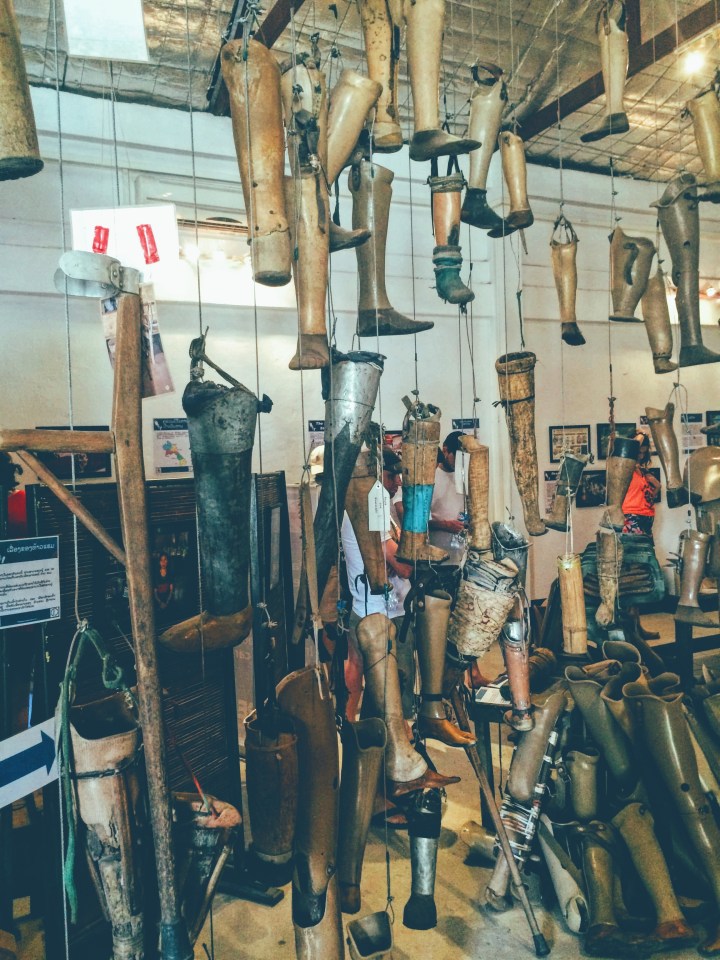


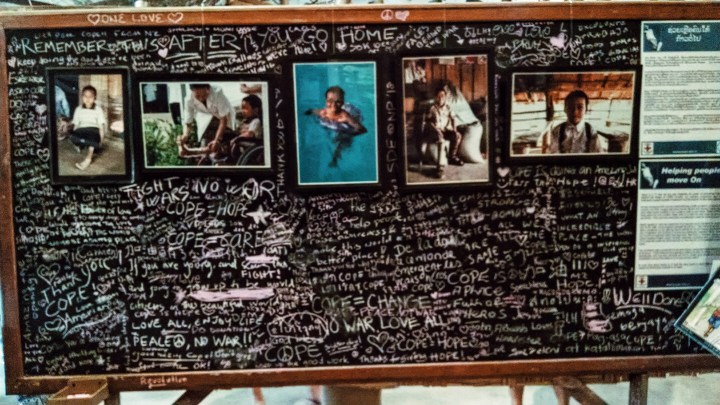
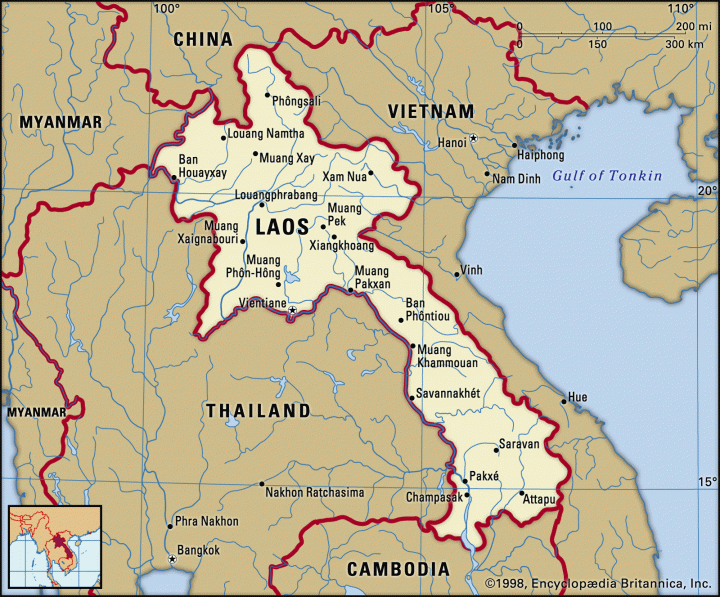

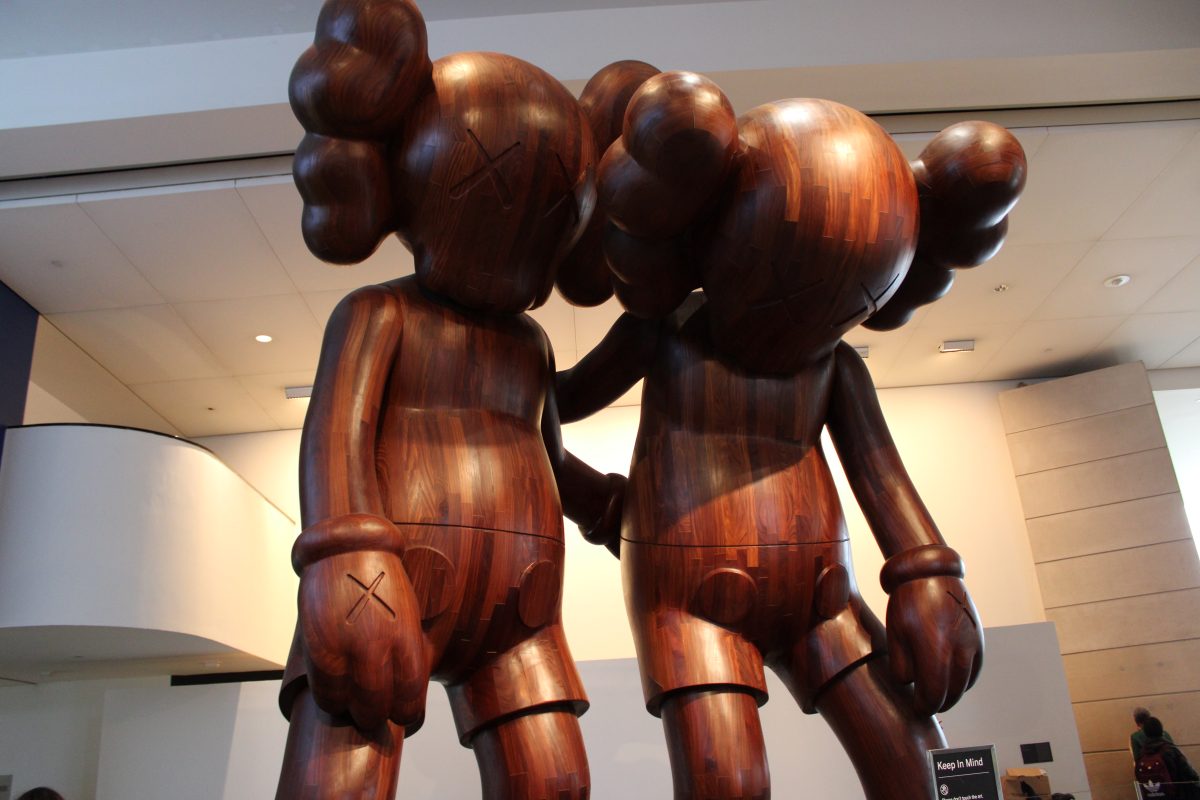
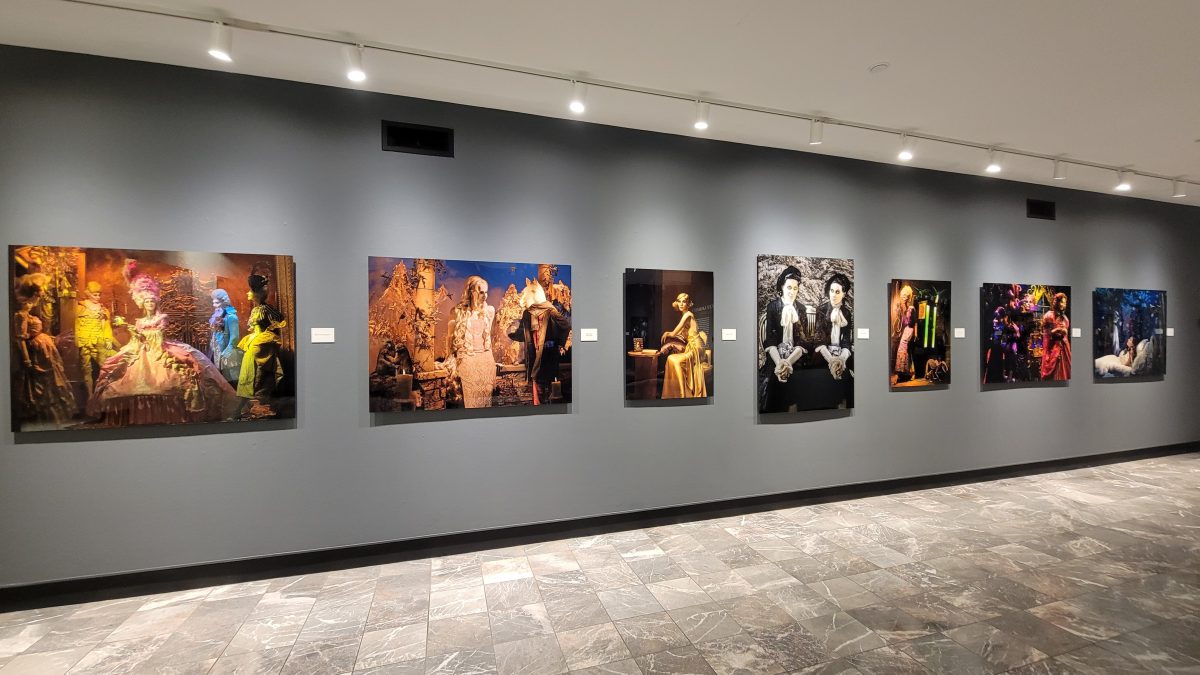
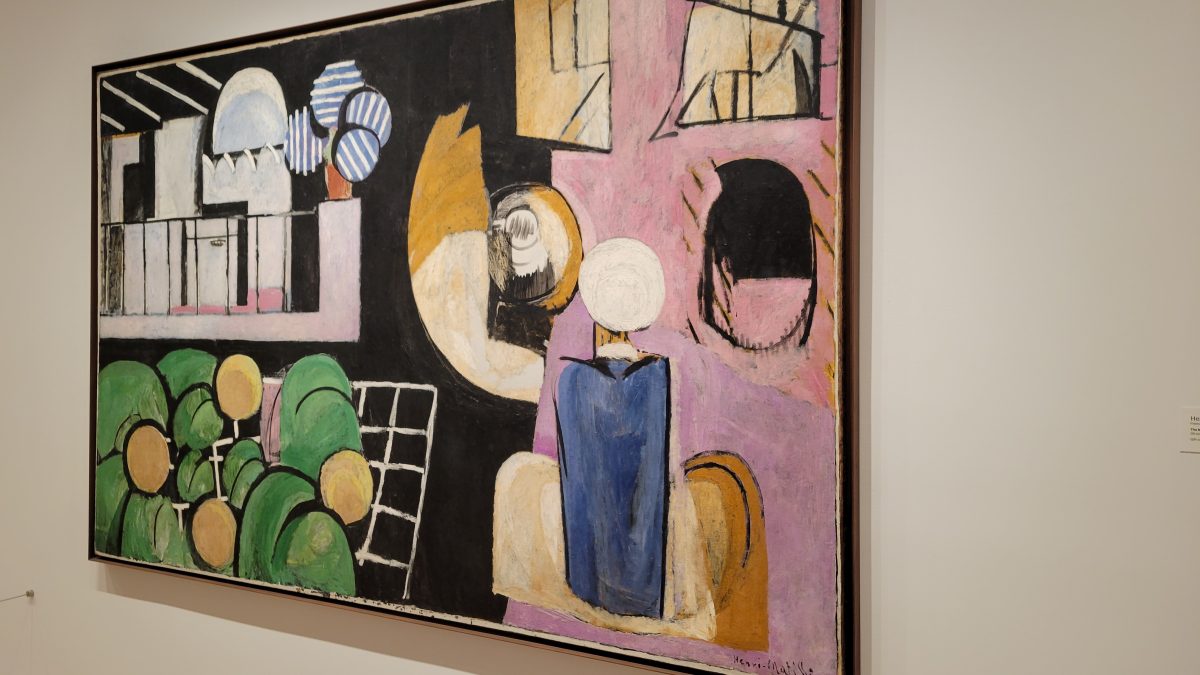
I'm with you as a proud American, and it's good that there are places like this to bring light to our mistakes. Like the saying, "Those who do not know their history are doomed to repeat it' this is a good way to make sure we know our history. I didn't know about the Secret War with Laos and it pains me to see how the people of Laos suffered. I hope that we're able to atone for our actions and make sure we help those affected.
ReplyI should have visited this when I was in Laos in 2017. It was on the list but was not quite clear what it is about. Now I know.
I wouldn't have imagined that Laos has a cope center, which is so interesting from what I read in your post. The last picture with the prosthetics seems a bit of scary for me but it reminds to me of the town of Kanchanaburi which I visited in Thailand. It has a similar history let's say, i don't know if you have heard/ visited it.
ReplyYou are right. What happened in Vietnam is common knowledge. They made movies about it. They wrote books about it. But the history of Laos is not that well-known. I am hoping that more people get to know about it from your post.
ReplyI didn’t know what COPE was until after reading this. They are doing an incredible job by the sounds of it. I think most Americans don't realise the history of their country. I'm always surprised by how little some Americans know when I visit the US. It's a sad history of Laos, and one I wasn't aware of either.
ReplyThis was such an interesting read and such a tragic moment in history. This is one of the many things I love about travel. It opens our minds and hearts so much to the world around us. Like you said, I really didn't realize the effect that the Vietnam war had on the surrounding countries. So tragic.
ReplyI love that you are able to educate readers about this. It reminds me that history is often written by those that survive and not those that suffered.
ReplyVery interesting! I did not know about most of this, so it was quite interesting, allow very sad to read about. I think every country has it's bad sides, and the USA is certainly no exception. I was once in the same boat as you, growing up thinking my country (USA) was the greatest, but in reality we are as human as the rest of the world and mistakes/bad things happen or are caused by us. I always find it intriguing to learn more about the my country's history when traveling, each country has their own unique view and experiences with the USA, and all countries for that matter.
ReplyVisiting museums is always a must to each of my travel. This is the place where I learn a lot from its history, then talking to the local people. I understand that you felt a little disappointed realizing the truth with your own eyes, it happens to me when I learned from school is different in reality. That's why I prefer to discover it on my own, and keep on talking to more locals.
ReplyIt is a significant post; it's worth getting to know and tell a history. It is especially worth recalling these problematic moments, tragic in history. I was in Laos in 2009; I was in this museum and several other places. I saw areas that are dangerous due to the remains of bombs and mines. I hope to back to Laos one day.
ReplyWow! I really would love to visit this if I ever travel to Laos again. The Plain of Jars is one of the worst-hit areas in Laos and there are small exhibits on the US bombings as well. Also many uncleared bombs so stay away from wild tracks!
ReplyI didn't known about this place, thanks for sharing it. It certainly plays a key role in reminding of such a terrible moment in the history of the country. I'm taking note for when I'll manage to visit Laos in the future.
ReplyOhoh, this wonderful post comes in the wrong moment: I'm so hoping that by November the present madness is over so that I can go to Laos. I'm still optimistic.....
ReplySo interesting that the sign is made from prosthetics. And I had no idea that the US was at war with Vietnam for so long. Truly an eye opener!
ReplyI absolutely love reading your articles! This sentence really resonated with me, "The more I travel, the more I continue to learn about being both a citizen of the USA, and also a citizen of the world." I think expanding our horizons and minds are some of the most important benefits of travel.
Reply